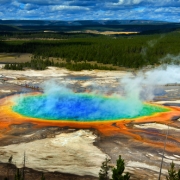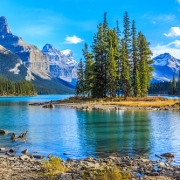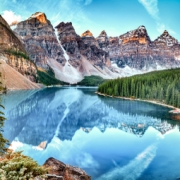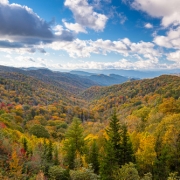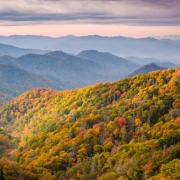Many historians believe a several-thousand-year-old diet—that of the ancient Maya—was intriguingly nutritious, diverse, flavorful, and protein-rich.
In this deep dive, discover the contours of ancient Mayan food culture. Learn how Mesoamerican trade, agricultural innovations, and brilliant cooking inventions enhanced their diets over time. Then, discover some of the best traditional Maya dishes to try today.
What Did The Mayans Eat In Different Eras of History?
The ancient Mayan diet evolved significantly across four eras: the pre-Maya archaic period, the Preclassic Period of Maya civilization, the Classic Period, and the Post-Classic Period.
In each era, typical Maya food changed, often becoming richer and more complex than the previous period’s diet.
Pre-Mayan Food Innovations In Mesoamerica (8,000 BCE – 2,000 BCE)
Around 8,000 BCE, human groups in the Yucatan peninsula began transitioning from nomadic hunting and gathering to small, self-sustaining farms. These early peoples’ practices laid the foundation for the Maya food culture.
Early Farms Domesticate Wild Vegetation (The “Three Sisters”)
Archaic agriculture started by domesticating flavorful, highly nutritious forest vegetation. They focused on multiplying and breeding cultivars of “The Three Sisters”: beans, squash, and maize (corn).
Once they made this dietary triumvirate readily available, they domesticated more bean species, diverse chili pepper plants, sweet potatoes, jícama, and chaya (a tree with nutritious, spinach-like leaves).
Large-Scale Fish Trapping
As archaic-era communities grew, they began to collaborate for food. Large-scale fish trapping projects were human cultures’ earliest steps beyond subsistence farming in the Yucatan peninsula.
They constructed maze-like stream funnels, weirs, and holding ponds to catch a diverse range of edible sea creatures, including sharks.
The earliest large-scale traps were zigzagging channels, dug to direct waters from the Gulf of Mexico, the Caribbean Sea, and the Usumacinta River through one-way gates and containment pools.

Maya Food Culture Evolves In Preclassic Period (2,000 BCE – 250 AD)
The Maya civilization came from some of the archaic groups in the region, and it quickly conquered most of the Yucatan peninsula.
Expanded Fish Trapping Facilities Boosts Maya Civilization’s Growth
The earliest generations of the Maya civilization began to expand and technologically advance the fish-trapping facilities of their forebears. They developed sturdier, more complex canals, built far larger weirds targeting fish migrating to flooded wetlands, and pressurized underground aqueducts serving multiple purposes.
These advances made the fishing traps wildly successful, with a single weir catching enough to feed thousands. They began preserving fish by salt and smoke, to store fish caught during migration season year-round.
As a result, the Maya population boomed, growing their civilization dramatically.
Milpa Cycle Agriculture & Forest Gardens Bear Fruit
Preclassic Mayan people also developed “milpa cycle” agriculture. This method manages the landscape sustainably, keeping the soil rich by rotating cropland between orchard growth periods, field growth periods, and fallow, restorative periods.
Orchard growth periods typically involved the cultivation of pet kot (forest gardens).
These gardens were filled with well-tended fruit trees, many of which were bred into new cultivars over time. Mayans’ pet kot often included:
- Cacao
- Pumpkins
- Ramón (bread nut)
- Jocote (like mango)
- Guava
As Mesoamerican trade routes became established, they added pineapple, soursop, papaya, custard apple, and avocado trees to orchards.

Bees, Turkey & Deer Domesticated
The Maya became the first civilization to start beekeeping. Archeologists have discovered ancient, limestone beekeeping tools, and significant evidence the Mayans selectively bred stingless Melipona bees for their honey.
Preclassic Maya domesticated wild turkeys for their eggs and meat, and they began keeping deer as livestock and companions in courtyards.
Ancient Maya & Aztecs Invent Masa, Processed Maize Flour Dough
The most groundbreaking culinary innovation in this period may have been nixtamalization.
Nixtamalization was a method of processing maize to create masa, a flour akin to contemporary cornmeal. This led directly to the invention of corn tortillas, the nutritious drink atole, and the dish that would eventually evolve into tamales.
Mayan Food Shaped By Mesoamerican Trade In Classic Period (250 AD – 950 AD)
As the ancient Maya traded with other Mesoamerican cultures, their diet became richer. They traded cacao, salt, and maize, and, in return, received tomato plants, achiote shrubs, and Aztec-domesticated ducks.
Mayan Cuisine Advances With “Hot Rock” Cooking & Peccaries
The Maya invented a pib, a type of underground, slow-cooking oven. They also mastered the art of “hot rock cooking”—a method of distributing heat evenly throughout a dish with clay balls.
The Classic Period also saw the first Mayan peccary (boar) herds, adding more pork to their diets. Melding these innovations, the Maya created iconic dishes like Poc chuc (akin to pork barbecue), and tender, slow-cooked cochinita pibil.
Post-Classic Period Brings Vanilla, Baking To The Maya Diet (900 AD – 1521 AD)
The post-classic period increased trade with Aztecs, adding more turkey meat and eggs to Maya diets. They created dishes like huevito con chaya—a simple, delicious egg and tree-spinach meal.
This trade increase, plus advancements in fishing and livestock herding, led to a boom in the popularity of savory tamales among Mayans.
Similarly, with increased trade with the Totonac people, vanilla cultivars became prevalent in the kitchens of Maya royals and high-ranking priests. This popularized atole de vainilla (a sweet, maize-based drink), and the root-beer-like hoja santa.

What Maya Foods (Or Maya-Inspired Meals) Do People Eat Today?
If you find yourself in Yucatan, try some truly authentic Mayan cuisine, or modern Maya-inspired dishes, like:
- Papadzules, Maya-inspired wraps stuffed with hardboiled eggs, squash, and pumpkin seeds rolled into a maize tortilla, dipped in pumpkin sauce, and garnished with a tomato-chili-pepper sauce.
- Honey Desserts (Guava Mousse, Sweet Corn Cakes), each infused with the rare honey of stingless Mayan melipona bees, plus flavors like vanilla or Xtabentún—a liqueur of fermented honey and anise.
- Cochinita Pibil, pork cooked and marinated for days using hot rock methods.
- Pan de Cazón, a shark-based dish that updates the coastal Maya recipe just slightly.
Enjoy Delicious Mayan Meals With Caravan
On your next adventure, eat your heart out.
Caravan’s Tour of Mexico’s Yucatan Peninsula is all-inclusive. Guests get to explore ancient Maya structures from Tulum to Chichén Itzá, enjoy the beaches of Cancún, and let Caravan cover unforgettable meals at every spot on the itinerary.
Call 1-800-227-2826 to get your ticket today. If you want more information, call our team at +1-312-321-9800.

